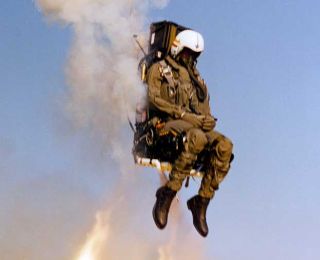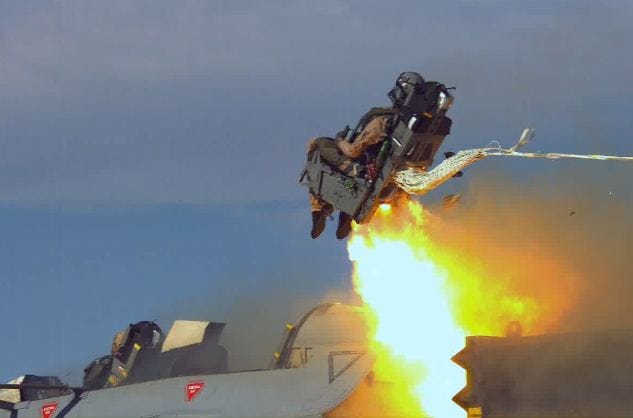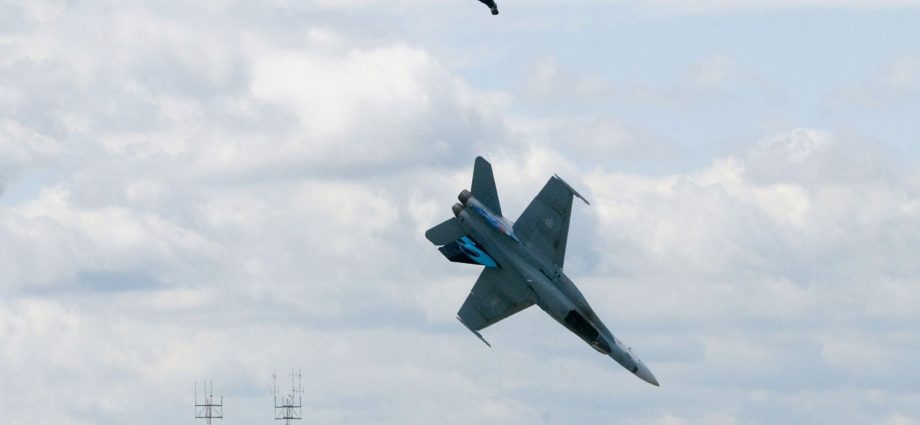An ejection seat or ejector seat is a system designed to rescue the pilot or other crew of an aircraft in an emergency.

In most designs, the seat is propelled out of the aircraft by an explosive charge or rocket motor, carrying the pilot with it.
Once clear of the aircraft, the ejection seat deploys a parachute. Ejection seats are common on most types of fast military aircraft.
History
The first type of ejection seat was a bungee -assisted escape from an aircraft which took place in 1910. In 1916 Everard Calthrop, an early inventor of parachutes, patented an ejector seat using compressed air.
The modern layout for an ejection seat was first proposed by Romanian inventor Anastase Dragomir in the late 1920s. It was successfully tested on 25 August 1929 at the Paris-Orly Airport near Paris.
Dragomir patented his “catapult-able cockpit” at the French Patent Office.
The design was perfected during World War II. Prior to this, the only means of escape from an incapacitated aircraft was to jump clear (“bail out”).
This was difficult, causing in many cases injury to the crew, with egress from a confined space, G-forces and the airflow past the aircraft.
The first ejection seats were developed independently during World War II by Heinkel and SAAB. Early models were powered by compressed air and the first aircraft to be fitted with such a system was the Heinkel He 280 prototype jet-engined in 1940, the first operational military jet in late 1944 to ever feature one.
The lightweight Heinkel He 162A Spatz, featured a new type of ejection seat, this time fired by an explosive cartridge.

The work of James Martin and his company Martin-Baker proved crucial in the future of ejection seats.
The first live flight test of the Martin-Baker system took place on 24 July 1946, when fitter Bernard Lynch ejected from a Gloster Meteor MkIII jet. Shortly afterward, on 17 August 1946, 1st Sgt. Larry Lambert was the first live U.S. ejectee.
The purpose of an ejection seat is pilot survival. The pilot typically experiences an acceleration of about 12–14g. Western seats usually impose lighter loads on the pilots; 1960s–70s era Soviet technology often goes up to 20–22 g using SM-1 and KM-1 gunbarrel-type ejection seats.

Compression fractures of vertebrae are a recurrent side effect of ejection.
Early models of the ejection seat were equipped with only an overhead ejection handle which doubled in function by forcing the pilot to assume the right posture and by having him pull a screen down to protect both his face and oxygen mask from the subsequent air blast. Martin Baker added a secondary handle in the front of the seat to allow ejection even when pilots weren’t able to reach upwards because of high g-force.
Later (e.g. in Martin Baker’s MK9) the top handle was discarded because the lower handle had proven easier to operate and the technology of helmets had advanced to also protect from the air blast.

(Thanks to Wiki.)


